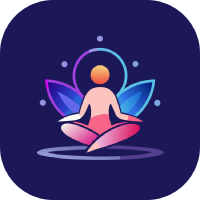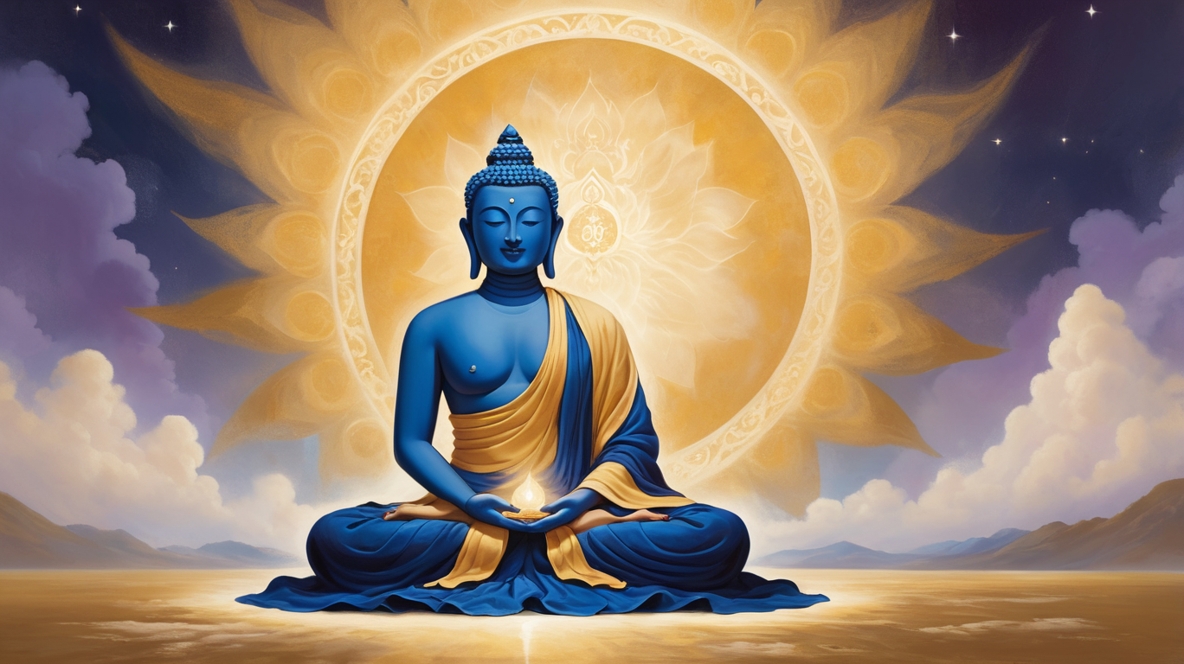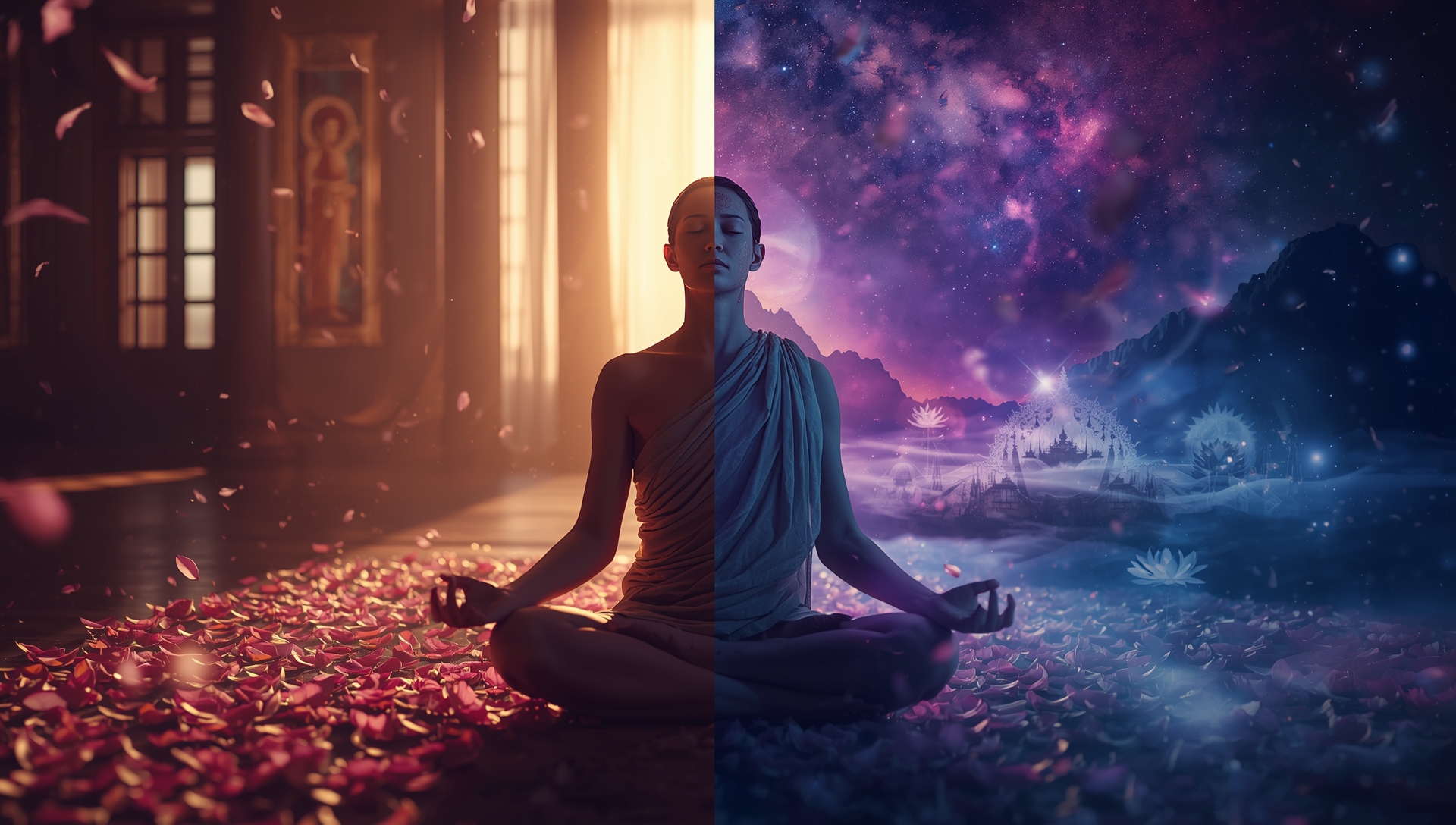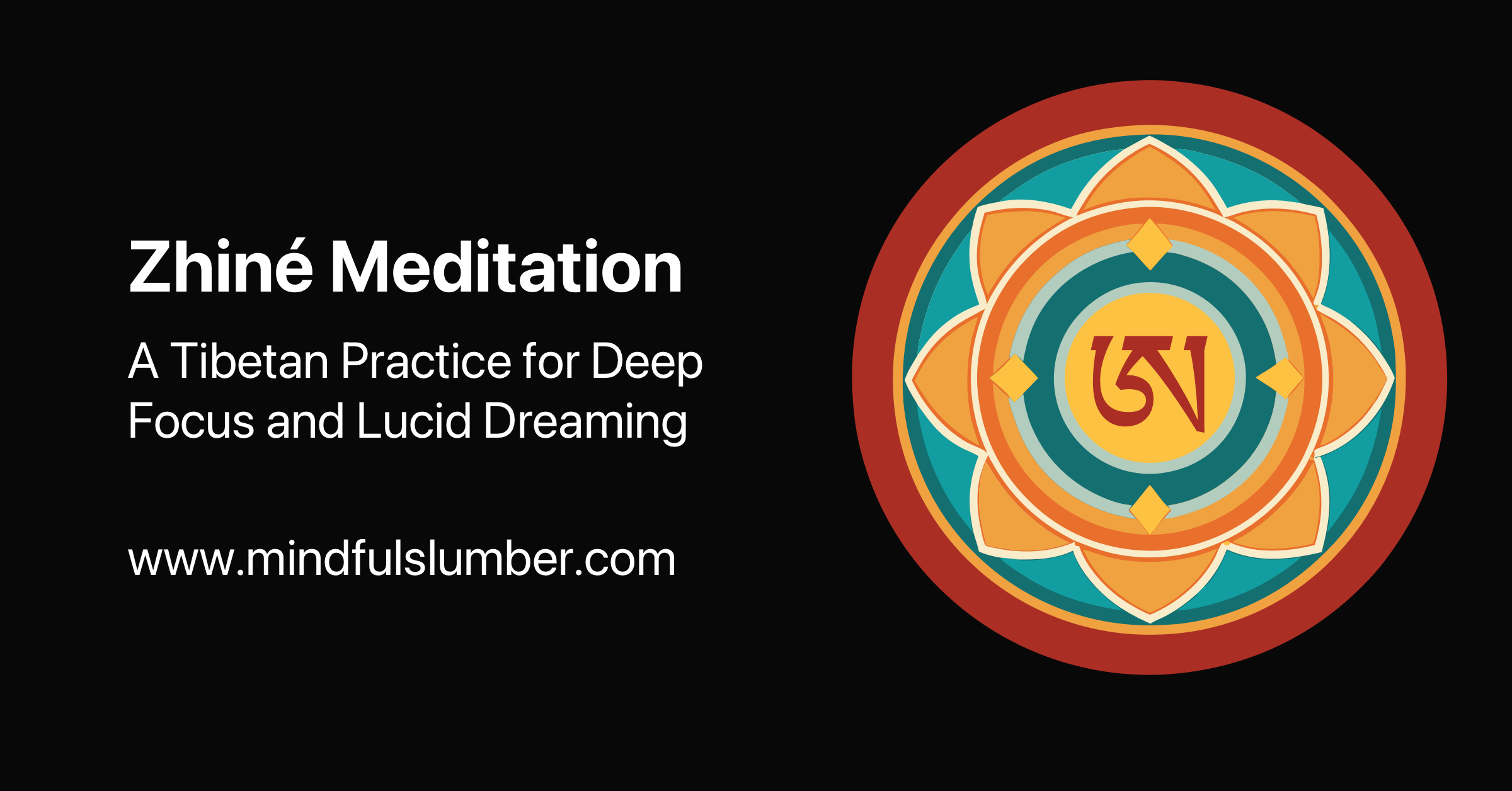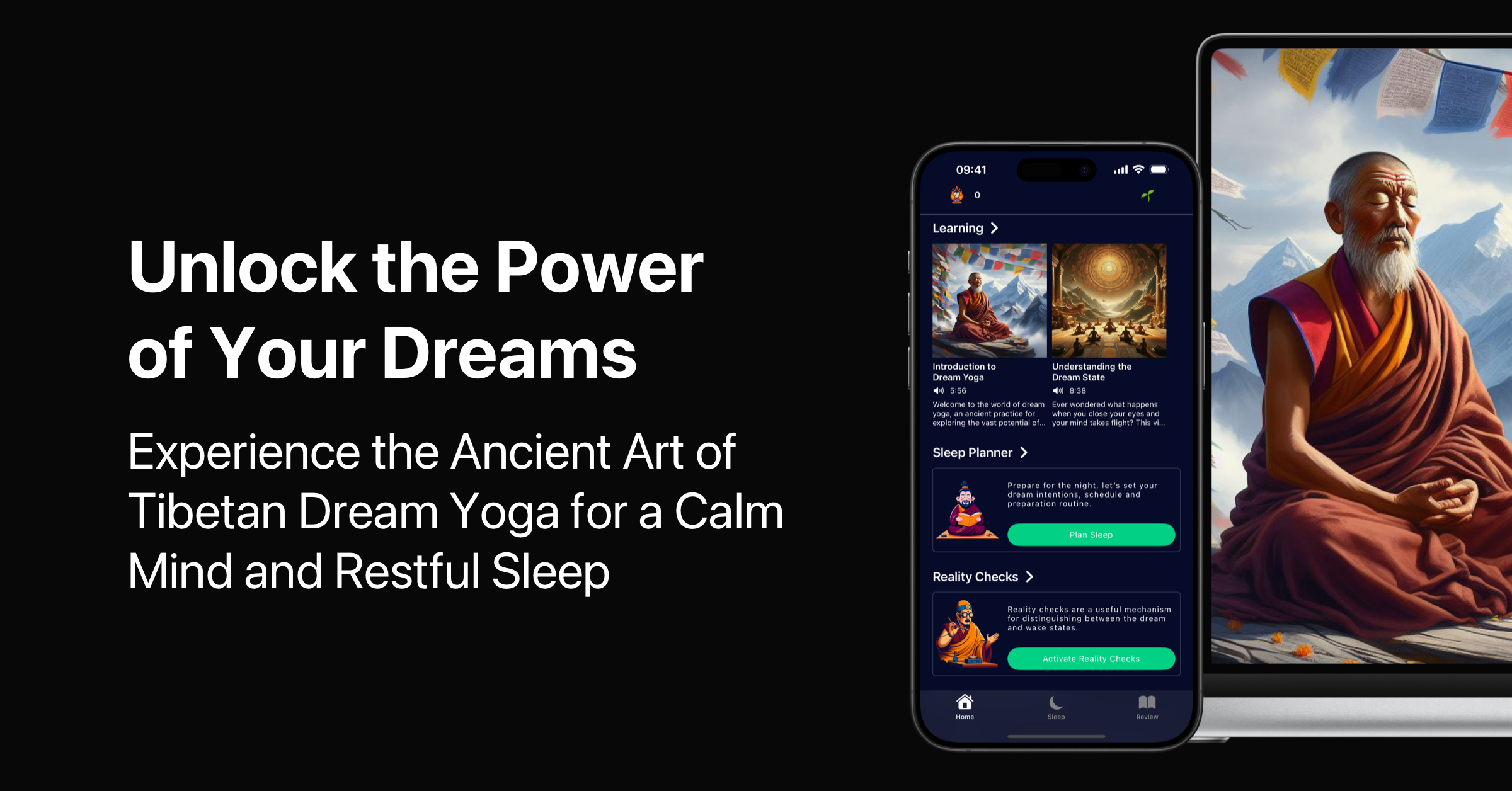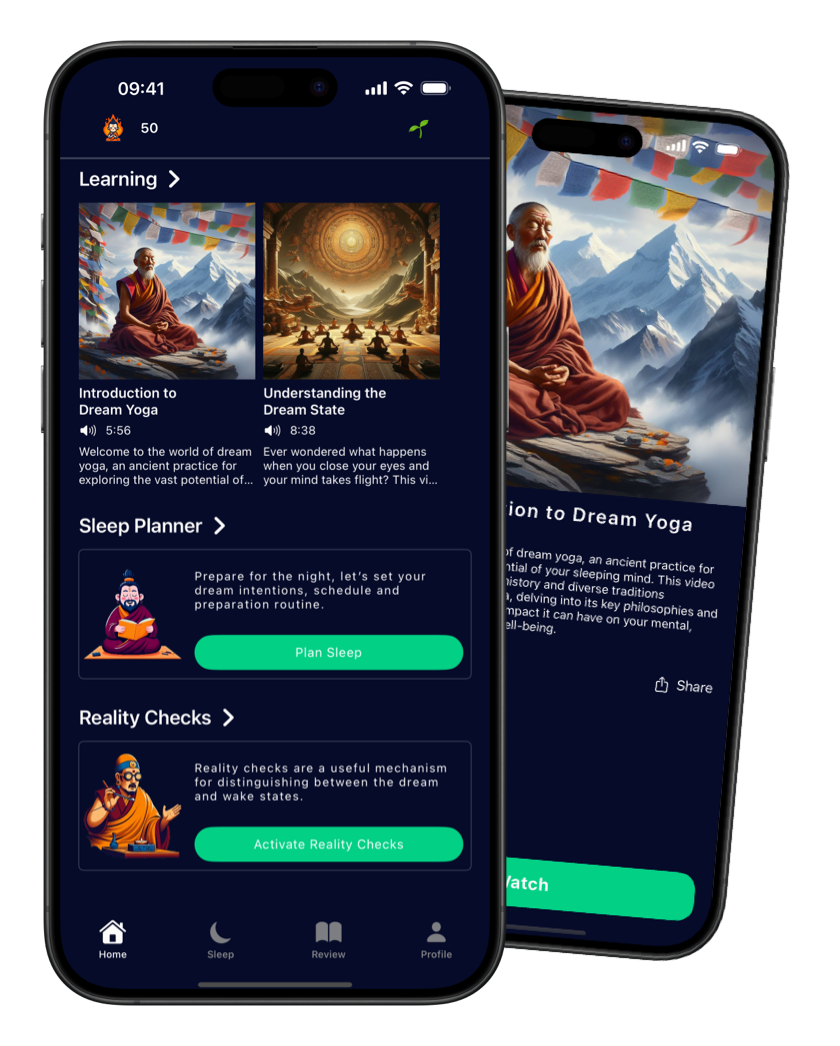Dream yoga, known as mi-lam (མི་ལམ་) in Tibetan, is a profound spiritual practice that has long been an integral part of the Bön tradition. Bön, Tibet’s ancient indigenous spiritual system, represents one of the world’s oldest continuous wisdom traditions, with roots extending back over 3,000 years. Founded by the enlightened master Tonpa Shenrab Miwoche, Bön developed sophisticated practices for spiritual realization that predate the arrival of Buddhism in Tibet by centuries.
While Bön shares certain meditative techniques with Tibetan Buddhism—a result of centuries of cultural exchange—its dream yoga practices retain distinctive characteristics rooted in its pre-Buddhist shamanic and dzogchen origins. The Bönpo (practitioners of Bön) have preserved unique approaches to consciousness exploration that offer profound insights into the nature of mind and reality.
Historical Context: The Ancient Roots of Bön Dream Practices
The Bön tradition traces its origins to the Buddha Tonpa Shenrab Miwoche, who lived in the ancient kingdom of Zhangzhung (now western Tibet) approximately 18,000 years ago according to traditional accounts, though historical scholarship suggests a more recent timeframe of around 1,800 years ago. The Bön teachings were organized into what Bönpo call the “Nine Ways” (theg pa rim pa dgu), with dream yoga belonging to the highest vehicle known as Dzogchen (རྫོགས་ཆེན་) or the “Great Perfection.”
During the 8th century, when Buddhism was establishing itself in Tibet, many Bön practices went underground or were integrated into Buddhist frameworks. However, the essential Bön teachings, including their sophisticated dream yoga methods, were preserved in hidden texts called terma (གཏེར་མ་) and transmitted through unbroken lineages of masters.
The 11th century marked a renaissance for Bön when masters like Shenchen Luga and later Melong Dorje systematized the teachings, ensuring that practices like dream yoga maintained their authentic Bön characteristics while adapting to changing times.
What is Dream Yoga in the Bön Tradition?
Dream yoga in Bön is a practice of cultivating awareness within the dream state. Much like Tibetan Buddhist dream yoga, the goal is to recognize that the dream state is an illusion, just like the waking state. This practice allows practitioners to gain control over their dreams, transform them, and ultimately realize the nature of mind. However, in the Bön tradition, dream yoga is deeply intertwined with the Dzogchen teachings, which emphasize realizing the true, luminous nature of the mind.
Practitioners of Bön dream yoga use dreams as a pathway to spiritual growth, training themselves to maintain awareness even in altered states of consciousness. By practicing mindfulness and lucidity in dreams, Bönpo practitioners can transcend ordinary perceptions, achieve heightened states of awareness, and prepare for navigating the bardo—the intermediate state between death and rebirth.
Why Dream Yoga is Important in the Bön Tradition
Dream yoga is not just a technique for controlling dreams; it serves a much deeper spiritual purpose in the Bön tradition. Dreams are seen as gateways to understanding the illusory nature of reality. By practicing dream yoga, Bön practitioners develop insight into the interconnectedness of the waking and dream worlds, eventually recognizing that both are constructs of the mind. This insight brings them closer to achieving rigpa, the direct awareness of the true nature of mind, which is the ultimate goal in Dzogchen practice.

To enhance this awareness, questioning the nature of reality becomes essential. This inquiry can foster a greater flow of awareness by challenging the perception that wakefulness and dreaming are substantially different states. By embracing the notion that both states are equally valid experiences, practitioners can cultivate a seamless consciousness that transcends the divide between day and night.
In this way, the practice of dream yoga not only bridges the gap between waking and dreaming but also empowers individuals to move with purpose within their dreams. This purposeful movement is a key aspect of achieving the goals of dream yoga, as it enables practitioners to engage with their dreams as consciously as they do with their waking life, ultimately leading to profound spiritual insights and growth.
Furthermore, mastering dream yoga helps practitioners prepare for the bardo state. In the Bön tradition, the ability to remain lucid and aware during the dream state is believed to aid in remaining conscious after death. Dream yoga becomes a crucial tool for navigating the bardo and achieving liberation, or at least a favorable rebirth.
Stages of Dream Yoga in the Bön Tradition
Bön dream yoga involves several stages, each designed to deepen the practitioner’s awareness within dreams:
Recognizing the Dream: The first step in Bön dream yoga is learning to recognize that one is dreaming. Practitioners use mindfulness techniques during the day, reminding themselves that all experiences are like a dream. Over time, this awareness naturally extends into the dream state, leading to lucid dreaming.
Transforming the Dream: Once lucidity is achieved, practitioners learn to manipulate the dream environment. This could involve changing the scenery, transforming one’s dream body, or facing and overcoming negative forces in the dream. This practice cultivates detachment from habitual perceptions and emotional reactions.
Multiplying the Dream Body: A more advanced stage of Bön dream yoga involves creating multiple dream bodies. This practice reflects the illusory nature of the self and helps practitioners break free from egoic identification.
Confronting Fear: Dream yoga often brings practitioners face to face with their deepest fears. By confronting and dissolving fear-inducing elements within dreams, practitioners gain mastery over their mind, making them more resilient in both waking life and the bardo.
Realizing the Nature of Mind: The final goal of Bön dream yoga is to use the dream state to recognize the non-dual nature of mind. This state of pure awareness, known as rigpa, represents a direct experience of the true nature of reality, beyond illusion and dualistic thinking.
How to Practice Bön Dream Yoga

If you’re interested in practicing dream yoga within the Bön tradition, there are some preparatory steps you can take. While receiving guidance from a qualified Bön teacher is recommended, these basic steps can help you begin your journey:
Daytime Mindfulness: Cultivate the habit of questioning whether you are dreaming throughout your waking day. This practice of self-inquiry will eventually transfer to your dreams, allowing you to recognize when you are dreaming.
Dream Journaling: Keep a dream journal by your bed and write down your dreams as soon as you wake up. This helps strengthen your connection to the dream world and enhances dream recall.
Visualizations Before Sleep: Bön dream yoga often involves specific visualizations before sleep, aimed at carrying awareness into the dream state. Visualizing deities or luminous spheres of light can help you remain conscious as you transition into dreaming.
Reciting Mantras: Chanting specific mantras before sleep is a common practice in Bön dream yoga. These mantras help to set the intention for lucid dreaming and spiritual awareness during sleep.
Conclusion
Bön dream yoga offers an opportunity to push the boundaries of your consciousness and gain insight into the deeper nature of reality. Through the practice of lucid dreaming, transformation of dreams, and ultimately realizing the illusory nature of both dreams and waking life, practitioners can move toward enlightenment. Whether you’re just beginning to explore the Bön tradition or you’ve been practicing for years, dream yoga opens up a unique pathway to spiritual growth and understanding.
To begin your practice, consider studying with a qualified Bön teacher or incorporating basic lucid dreaming techniques into your nightly routine. With dedication and mindfulness, dream yoga can become a powerful tool for self-realization and spiritual awakening.
